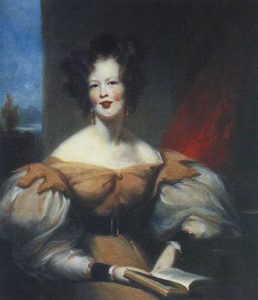 About the author: Harriet Low Hillard (1809 -1877). Rogerio Miguel Puga (Assistant Professor at the University of Macau. Researcher at the Centro de História de Além-Mar and the Centro de Estudos Anglo-Portugueses, Universidade Nova (Lisbon)), in Interpreting Macau through the Journals of Harriett Low and Rebecca Chase Kinsman, wrote that,
About the author: Harriet Low Hillard (1809 -1877). Rogerio Miguel Puga (Assistant Professor at the University of Macau. Researcher at the Centro de História de Além-Mar and the Centro de Estudos Anglo-Portugueses, Universidade Nova (Lisbon)), in Interpreting Macau through the Journals of Harriett Low and Rebecca Chase Kinsman, wrote that,
Harriett Low (1809-1877) was part of a Unitarian family from Salem, Massachusetts. She arrived in Macau on 29th September 1829, accompanying her sick aunt, Abigail Knapp Low, the wife of William Henry Low (1795-1834) and became the first recorded young American girl to live in China.
The diary was published as My mother’s journal : a young lady’s diary of five years spent in Manila, Macao, and the Cape of Good Hope from 1829-1834 (George H. Ellis, Boston, 1900) with an introduction by the author’s daughter, herself a prolific writer on Theosophy in her day; of her mother, she wrote,
Imagine, then, a lively young girl, just past her twentieth birthday (who had been brought up in the midst of a family of twelve children, only one older than herself), suddenly transported from the dull and extremely provincial town of Salem, Mass., to live in China under the auspices of the East India Company, and in all the luxury and formality of the English society of that time. It must have been a bewildering change at first from the quiet and rather Puritanical regime of home, where Sunday was kept with the utmost strictness, and Saturday night was almost as rigidly observed, to the ceaseless round of dinners, balls, and Sunday visiting in Macao, from being one of the many superfluous females of Massachusetts to occupying the dazzling and somewhat hazardous position of the only ” spinster ” where men were so numerous and for much of the time so unoccupied.
But the society of an indifferent crowd soon palls upon an affectionate nature; and this girl of twenty, taken away from the companionship of her beloved elder sister and all the duties and pleasures of home, found many occasions to regret all she had left behind. There was much, too, to shock her prejudices in the manners and customs of society in Macao ; and it took her some time to acquire that sweet tolerance and charity for which she was in later life so noted. It is interesting to a student of human nature to watch the development of her mind and character amid the pleasures and the trial of her residence in China; and it is to be regretted that so many of the more intimate details of that life were reserved for home letters (mostly lost) instead of being recorded in this Journal, kept for the benefit of her elder sister.
About the diary: As cited by Rogerio Puga, “During her four-year stay in the territory, she wrote several journals and letters, which addressed to her older sister ‘Molly’ (Mary Ann, 1808-1851). These were subsequently assembled and published by Low’s daughter, Katherine Hillard, in 1900, and more recently by Nan P. Hodges and Arthur W. Hummel (2002).” The version used here comes from the 1900 edition, edited by Katharine Hillard, who wrote, in her introduction to the book, that, the journal was “kept for the benefit of her elder sister.” Of the contents, which she edited, Hillard wrote, “As there must necessarily be much repetition in a journal covering so long a space of time, a great deal has been cut out ; but, with the exception of a few slips of the pen, nothing has been corrected or altered.”
The Philippine Diary Project contains the diary entries from May 24, 1829 (the start of the dairy), to September 22, 1829 (departure from Manila to Macao). Of this, the substantial portion of the entries deal with sea journey to Manila, with only twelve days spent in Manila (Sept. 9-22, 1829).